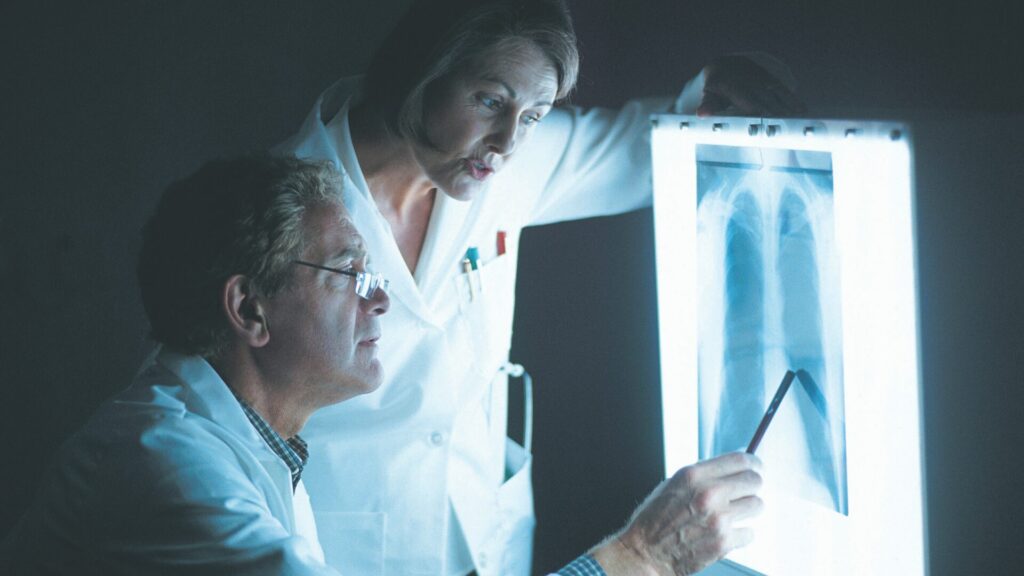Where and When To Have a Thoracic Discectomy in McKinney TX
Image sourced from Canva
While thoracic discectomy in McKinney TX is uncommon, some pains in the thoracic spine can be unbearable that it may lead to paralysis. Knowing about this condition should not scare you. There have been fewer cases that may need thoracic discectomy than discectomy in the lumbar and cervical spine.
The Thoracic Spine
The thoracic spine is made up of 12 stacked vertebrae, connecting the lumbar and cervical spines. It is a sturdy structure of vertebrae supporting most of the essential body parts such as the rib cage, the neck, flexible joints, soft tissues, nerves, and blood vessels.
Being in between the neck and lower back, it has limited motions. The thoracic spine only bends to the back, front, left, and right. Because of these limited motions, it is not likely to develop herniated discs.
However, developed herniated discs in the spine could cause much discomfort. The thoracic spine carries the weight of essential and sensitive body organs enclosed in the rib cage.
How Herniated Discs in the Thoracic Spine Damages the Spinal Cord
Herniated discs in the thoracic spine are thinner than the herniated discs that develop in the lumbar or cervical spine. With very few cases of herniated discs in the thoracic spine, it can damage the spinal cord.
The disc in between vertebrae tears or wears out as you age. A herniated disc occurs when a soft gel-like substance in the inner core squeezes out of the disc. While it can be thin, the protruded disc adds pressure on the nerves protected in the spinal canal.
It can be crucial. The spinal nerves send the motor, autonomic, and sensory signals to the brain. The constant blocking and pressure brought by herniated discs don’t only bring pain but also lead to paralysis.
Herniated discs block the flow of blood in the blood vessels located in the thoracic spine. Hence, the herniated discs cause damage to the spinal cord’s nerve tissues. For these instances, a person with damaged spinal cord nerve tissue may experience motion loss in the thoracic spine.
Although some herniated discs can be prevented through exercise or relieved through medications, increased damages may need thoracic surgery.
Symptoms of Herniated Discs in the Thoracic Spine
- Mid-back pains
- Groin pains
- Pains around the front chest
- Weakness and numbness in the legs or arms
- Bowel and bladder dysfunction
- Weakness in the lower extremities
Causes of Herniated Discs
- Disc degeneration or aging
- Excessive force from the muscle while lifting heavy objects
- Trauma or injuries
When Do You Need a Thoracic Discectomy?
The thoracic spine is a sensitive portion of the spinal cord. When thoracic discectomy is unnecessary, you can opt to treat thoracic herniated discs with a back brace, medication, rest, and physical therapy. Surgery should be the last option.
Early herniated discs don’t show up until after two years or more. To determine if the thoracic spine needs discectomy, a surgeon assesses the damaged area, position, extent of damage of the herniated discs, nerve irritation, or the damage it caused to the spinal cord. To diagnose the need for surgery properly, you may undergo a series of tests like X-ray, CT scan, MRI, and electromyography.
What is Thoracic Discectomy?
Going through thoracic discectomy involves surgery to remove a part or the entire herniated disc that presses on the nerve. There are two main approaches to this procedure, the anterior and posterolateral approach.
Anterior Approach
The anterior approach involves removing the chest cavity or herniated disc through the front side.
Surgeons are only able to practice a few cases treated through thoracic discectomy. You need an expert surgeon to perform an endoscopic thoracic discectomy. Few surgeons can perform this. The advanced technology uses an endoscope to view the affected area of the thoracic spine. The process requires accessing the affected area with a guidewire, tapered dilator, and portal tube just below the pressurized nerve.
The comprehensive procedure of this case-sensitive and minimally invasive thoracic discectomy has many benefits. These benefits include a short recovery period, higher success rates, minimal or zero blood loss, less incision, spinal mobility preservation, and minimal scar formation.
Posterolateral Approach
The posterolateral approach involves removing the chest cavity through the backside of the thoracic spine.
The transpedicular thoracic discectomy involves the incision of a small trocar on the backside of the affected area. A trocar is surgery equipment that serves as a drainage outlet of cavities removed from the outer core of the disc. Using a 70° endoscope, the surgeon can see the protruded disc through its lens.
This approach is beneficial to patients. It is minimally invasive and bypasses complicated postoperative chest operation. The thoracic discectomy recovery time is impressive for calcified or soft discs. Studies show that while the posterolateral approach applies to these types of discs, the anterior approach is applicable to remove calcified discs in the inner core.
For a positive thoracic discectomy successful rate, an expert surgeon must perform this sensitive surgery. Find a board-certified neurological surgeon that specializes in the treatment of spinal conditions such as herniated discs and other conditions like degenerative disc disease or spinal tumors. With memberships to trusted neurological associations like the American Association of Neurological Surgeons, he should have a proven background in neurosurgical operations.
Dr. Scott C. Kutz, MD of Minimally Invasive Neurosurgery of Texas, is a board-certified neurosurgeon that specializes in treating and diagnosing spinal conditions. Do not suffer from the pains brought by herniated discs. For more information on thoracic discectomy in McKinney TX, book an appointment by calling (972) 244-3491.

